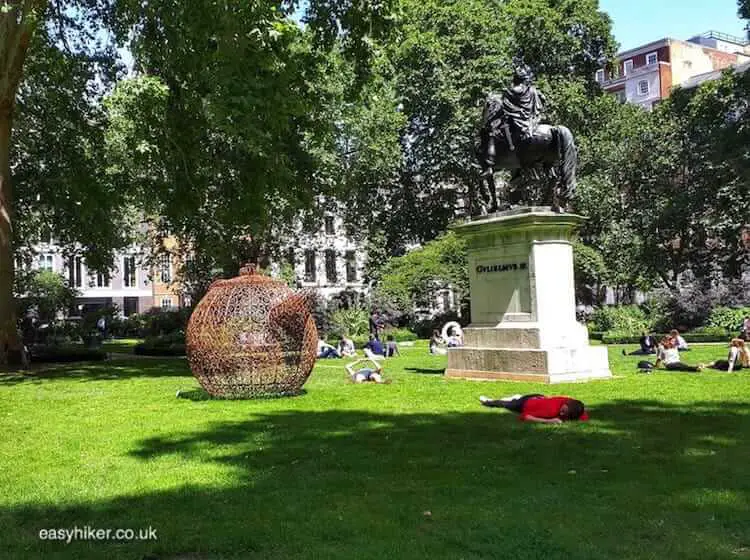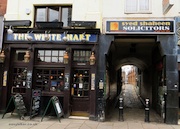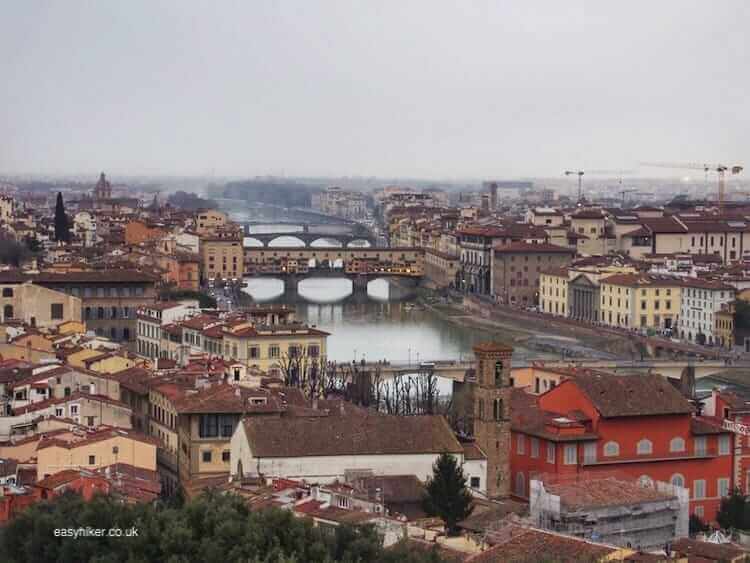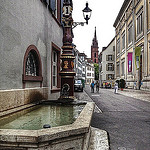The whole of Vienna is built on a foundation of lies: The Danube does not really flow through the city (and is neither beautiful or even blue) ; Vienna’s Imperial splendour belies the reality of being the capital of a small-ish country in Eastern Central Europe; a good portion of her much famed architecture is essentially just “icing sugar” that was pasted on uninspired pseudo-classicist structures.
When you talk to the Viennese, it won’t be long before you hear that sort of thing. I always find that a bit harsh. For much of her life, Vienna was surely no more mendacious than any other city.
More lies about Vienna
At a very important juncture of her history during the second half of the 19th century, at the time that Vienna expanded into her modern self, a kind of magical thinking appears to have taken over, a self-hypnotic belief in the reversibility of cause and effect, a dreamlike blurring of reality, perception and wishful thinking.
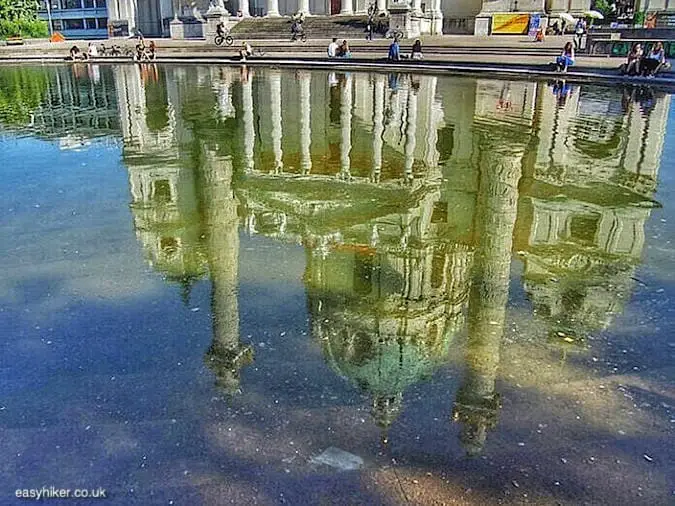
At a time when the Empire was rotting away, when it had already been divided into two almost equal parts (with more divisions clearly in the offing), when the Emperor was gently sliding into senility, when the Austrian Parliament could not even agree on a common language (MPs were encouraged to baffle each other with untranslated speeches in languages such as Slovak and Ruthenian), Vienna was hell-bent on taking on the architectural mantle of the New Rome.
From 1860 onwards, starting with the Viennese State Opera House …

… the old city wall was gradually replaced by literally hundreds of monumental buildings, all trying to outdo and out-bombast each other.
Where government and aristocracy lead, the bourgeoisie usually follows not far behind, and Vienna’s prosperous upper middle classes (the Empire was politically weak but economically booming) took their cues from the Imperial Pomp that was built around the Ringstrasse.
Most residential “palaces” of the late 19th century, however, were built from humble brick. The columns, corniches and all the rest – Apollo pursuing Daphne across the entrance of the Viennese Dentists Association, that sort of thing – were added on later, i.e. applied with stucco. This was the ornament that would eventually be condemned as “criminal” by a later generation of architects.
But for the time being, it was a clear sign that the rulers as well as the citizens of the “Dual Monarchy” were hoping that everything would be fine as long as they did not stop pretending.
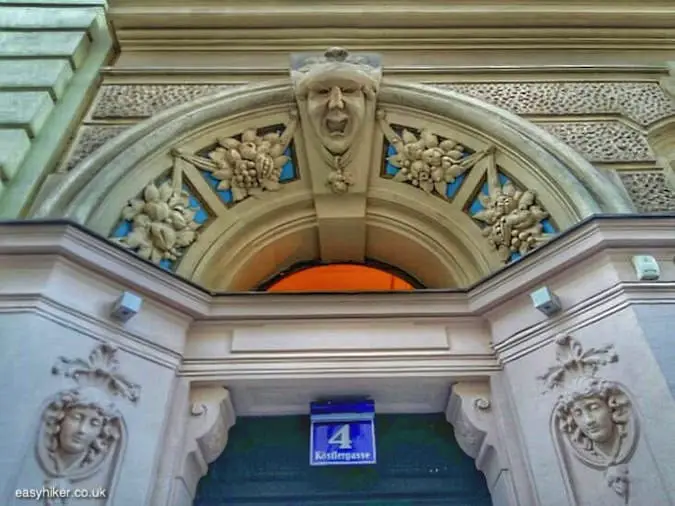
Enter the Viennese Jugendstil. Vienna caught the Art Nouveau bug later than other European cities but took the style to places where Brussels and Paris never dared to go, closer to the Neue Sachlichkeit (New Sobriety) of the 1920s and 1930s: with geometrical shapes that emphasized their function …
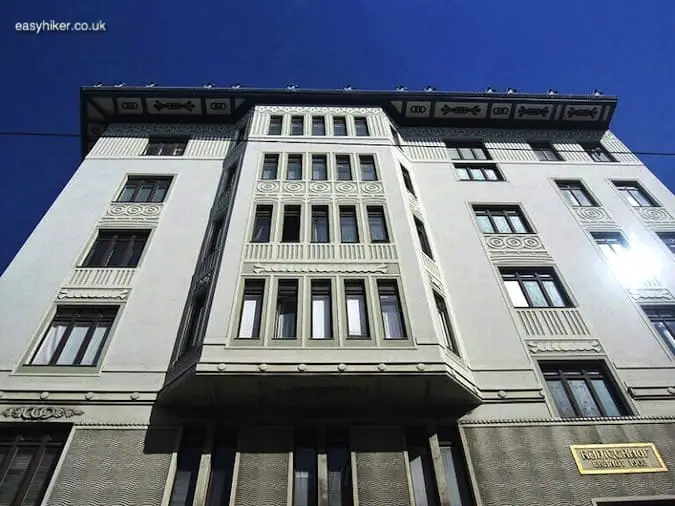
… and without any structural ornament, although there was plenty of surface decoration.
Modernism this may have been, but it came in the bourgeois variety, not the Bauhaus one with its glorification of the mass society and mass production.
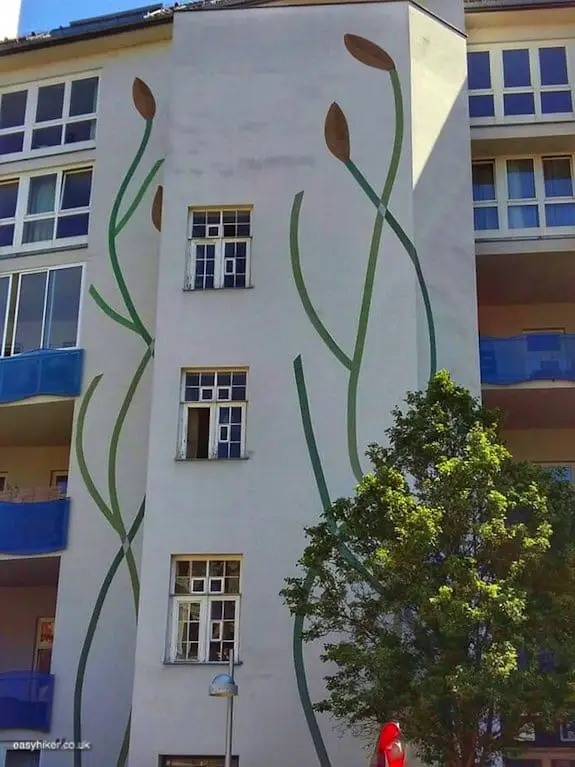
You can find buildings like that nearly everywhere in Vienna. Just open your eyes while you take a walk through the streets of any district, and you are bound to discover some real gems.

A specifically large number of Jugendstil buildings, however, was constructed around the Wienzeile boulevard that marks the border between the 5th and the 6th districts …

… where Otto Wagner, by taking over the responsibilities of the property developer on top of those of the architect, had guaranteed himself nearly total artistic freedom for his project of creating a “modern” new town.
His greatest buildings …
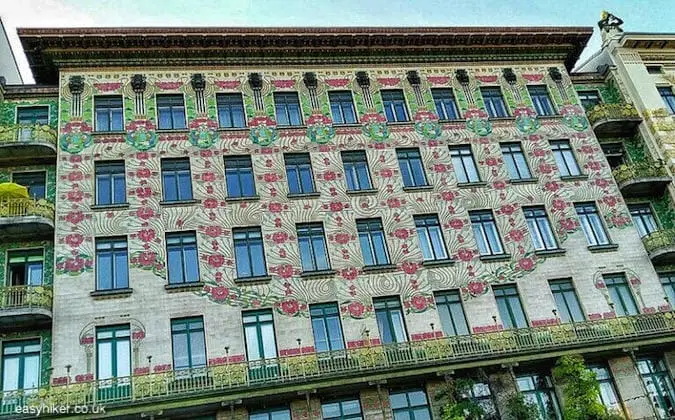
… always reward a second, closer look. The details can be as stunning as the overall impression.

Wagner also designed some stations of Vienna’s subway line no.4.
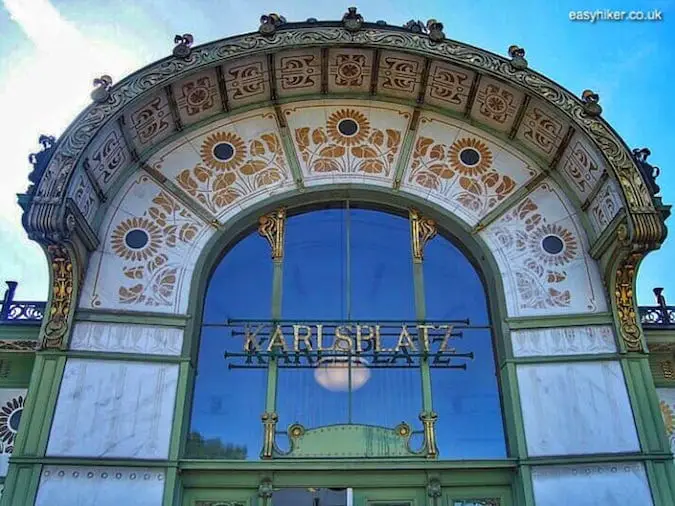
Where the Wienzeile begins, you can also spot the most famous of all Viennese Art Nouveau buildings: the Secessionsgebäude.”

As it happens, right opposite, you will find what may be Vienna’s best kept secret: the Naschmarkt, the world’s greatest food market.
If you think that’s hyperbole, you should go there yourself for a snack, for breakfast or for lunch (there are nearly as many little restaurants as there are food stalls), and then let’s see what you say.
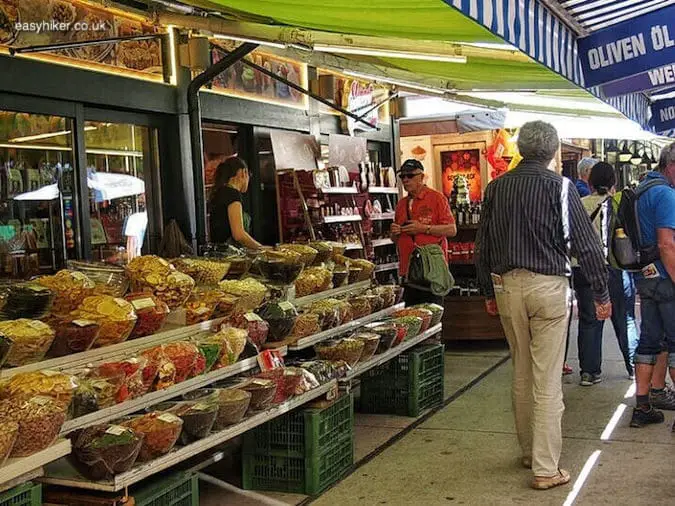
Never mind Art Nouveau architecture or the Danube: the Naschmarkt alone is well worth a visit to Vienna.



